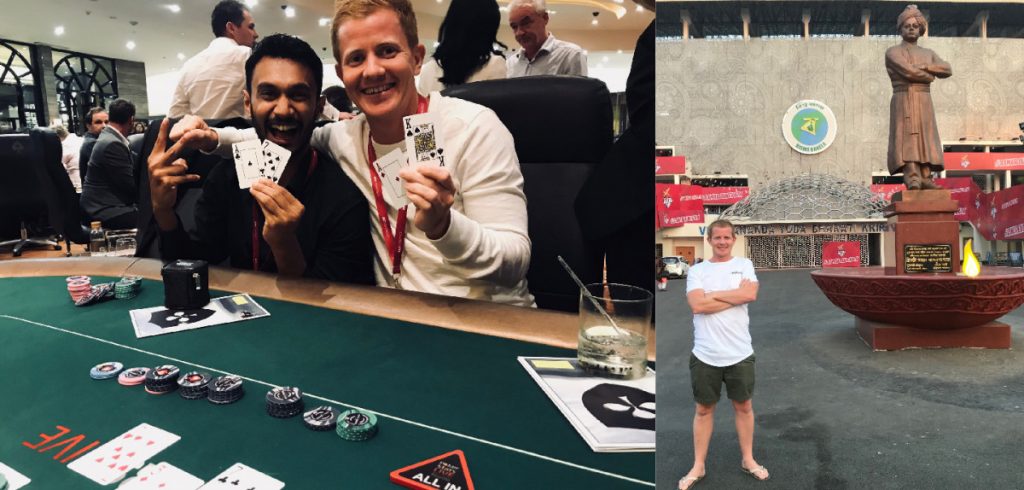India is one of the hottest markets for iGaming. But how do you localise your content in a country where the language can change every 15-20 kilometres?
Before we dig deep, an anecdote to set the appropriate mood for a digital iGaming conference about India.
“People in India communicate quite differently from what I am used to. I realised this when traveling in the Southern parts of the country a few years ago. I remember asking for a cup of tea at the hotel on our first night and the receptionist just bobbed his head.
“That means no where I am from, and I thought to myself; what a rude response to a rather reasonable request.
“Just a few moments later the receptionist brought me a lovely cup of tea and smiled. Apparently, a head bobble in India is usually used to indicate understanding or acknowledgment.”
The anecdote comes from Roy Pedersen, founder of the first company to offer translation services specifically for the iGaming industry in 2008.
All-in Global, said Pedersen (pictured below), has seen a tremendous growth in the demand for Indian languages lately from operators, game developers, platform providers and affiliates alike.

He revealed: “For Hindi we have received as many projects in the last six months as we did in the last three years before that. Punjabi is the language with the second most growth, followed closely by Telugu, Bengali, Marathi and Kannada.”
From two million to 100 million fantasy sports players
Since you are reading this, you are probably well aware that this market is on everyone’s lips ahead of this week’s SBC Digital India. It’s no wonder, with 75% of the population under the age of 45, and the number of internet users predicted by Statista to reach almost 900 million by 2023.
But what about the more immediate future? According to Google-KMPG, the number of gamers will exceed 628 million in 2020, while from 2016 to 2020 the number of fantasy sports players in India increased from two million to 100 million.
Sudhir Kamath is the CEO of 9stacks.com and Faboom.com, who works closely with the Indian market.
“The popularity of poker and fantasy sports are pan-India,” he said. “We don’t see high regional variations. Localisation will be one of the key factors driving deeper penetration of online gaming across the country.
“The fact is that English is not the first or even the second language for many of our prospective customers – so it’s obvious we need to offer them an engaging product in their own preferred language.”
Which languages should be prioritised?
“Currently we are offering English and Hindi, but player data and surveys indicate that we should be offering more,” Kamath explained. “Bengali, Urdu, Marathi, Punjabi, Kannada, Telugi, Malayalam and Tamil are highest on the list.”
With 122 languages spoken by at least 10,000 people each, there are few – if any – linguistic landscapes that are harder to navigate than India. Localisation and content budgets aren’t unlimited of course, so priorities need to be made here. In the infographic below you can see the number of speakers in the five biggest languages, as well as the geographical location of the 19 biggest languages.

“Most Indians wouldn’t know what wagering means”
Mohini from Mahendergarh in the state of Haryana is one of the top Hindi translators at All-in Global. She shared a good example of why Hindi is the key to reach the root of the Indian market, in addition to the obvious fact that almost 600 million people speak the language.
“Take the word wagering,” said Mohini. “A person in India with average English skills would not know the meaning of it. But the equivalent Hindi word ‘दाँव लगाना’ is commonly used. The complicated English gaming terminology makes it difficult for the people of India.”

Only 10% of the Indian population speak fluent English. A recent study by KPMG India and Google found that 70% of Indian internet users don’t trust content in a language that it’s not their own and they consider English content as “not reliable”.
Mohini added: “If I was to make a website or game available in India, I would have it localised into Hindi, Bengali, Telugu, Kannada, Malayalam and Tamil. Indian people with other languages as their mother tongue do understand Hindi.”
Regional differences between cricket and football
Dinesh from Jodhpur in Rajasthan is another experienced English to Hindi translator from All-in Global who specialises in sports and sports betting. He has also worked for Translators Without Borders. Dinesh pointed to regional differences when it comes to sports in India.
“Cricket obviously enjoys a pan-India fan following. But the same cannot be said about other games. Take football content for example. I would localise that for places like Bengal and Kerala in particular, with an emphasis on regional languages (Bengali and Malayalam) versus Hindi. Card games are more popular in the North where Hindi would definitely be the language of choice. The number of Indian gamers comfortable in Hindi is significantly higher than those in English.”
And what about Hinglish?
For those who never heard of it, the term ‘Hinglish’ blends the most spoken language in the country – Hindi – with English. It can be defined as a hybrid language that uses an eclectic mix of Hindi and English to make things work linguistically, in an intuitive way.
So by now, you must be thinking: should I localise my gaming content into Hinglish?
“We advise you not to do it,” said Marina Ribeiro, Marketing Executive at All-in Global. “If you would bet your entire communication using the Hinglish hybrid approach you would risk not being clear and miss precise communication between you and your customers.
“There is a fair bit of comfort with some English terms, among a large percentage of the population but although Hinglish remains especially popular in the young generations, a ‘one-size-fits-all’ approach does not work in India.”

So what type of approach does she recommend?
“A customised localisation strategy would always be the wisest choice,” added Ribeiro. “It can be one of your key advantages against the competition. If you have a well-defined geographic target and focus on the regional language to communicate with your audience, your company can shine near a specific audience that will instantly feel more connected to your brand by being able to engage and find information in their own language.”
“Do not underestimate the cultural complexity. India is known for having one of the most diverse cultures around the world. It’s essential to always validate your content by the attentive look of professional natives that can bring you the local factor and perspective to your content and really make a big impact on how your brand is perceived by your customers.
“When you move from one Indian territory to another the customs and cultural environment also change and those changes should be addressed and captured into your content.”









